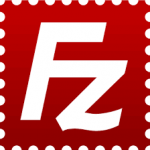Support
What is full color ?
The easiest way to describe full color printing would be to remember back in the days when we were mixing a red paint with our yellow paint to make orange. Full color is the same in principal, just a little more high tech. It is the process through mixing full color Cyan Magenta Yellow and Black (CMYK) to give well over 16 million colors.
What is a PMS color ?
PMS colors or Pantone colors are the specific codes given to a particular shade of a color. Ask for a “Pantone Color Chart” to choose the colors you want and no matter where you reproduce your image, whether on another printed media or part of the world, the Pantone Color Chart model helps keep your corporate image consistent.
What does DPI mean ?
DPI is an acronym for “Dots Per Inch”. Images with a high DPI have a higher quality and images with a low DPI have a lower quality. Text does not have to have the same DPI as a photograph does. So if you are supplying the artwork your self, take into consideration the quality of the image to be made and thus set up your files appropriately.
I have a file on disk do you accept it ? Yes we do! We accept files that are for a Mac or PC (Preferably Mac), such as illustrator Photoshop, Adobe PDF (Portable Document Format). We prefer Illustrator, Photoshop, InDesign and Adobe Acrobat .PDF files for ease of use. Because of the different versions of programs, when we access your file on our system, there is a possibility that the formatting could “jump” or change. Because of this, we insist that you supply all text as outlines. Alternatively, please supply the fonts used in your document. Fonts have different versions to, and to minimize problems, they should be supplied. This way, the formatting should remain unchanged.
How long will it take ?
Upon approval of artwork, the usual time frame is approximately 5 to 7 working days, but if it is completed earlier, we will inform you.
What are your Artwork Specifications ?
A beautifully designed project can fall apart if the artwork isn’t set up correctly. To ensure that it is printed exactly the way you intend, it is important to understand the basics. Here are some terms that may help:
Trim Marks
Printed to indicate the final size of a printed piece, and where the item should be cut to remove excess.
Impositions
In multiple page projects, imposition means the arrangement of pages so they will appear in proper sequence after press sheets are folded and bound. In terms of artwork, this means planning spreads from back to front, e.g. the front cover and the back page are one spread, page two and the inside back cover make up another spread, etc.
Bleed
Slight variations can occur when pages are trimmed to size. Bleed provides a margin for error and ensures the colors and images can extend to the very edge of the trimmed page and no unwanted white edges will appear. When preparing final artwork, a common mistake is in not providing the printer with bleed. To provide bleed, extend any image or colored box beyond the trimmed size of the artwork. This margin needs to be at least 3mm thick.
Embedding Fonts
If you are supplying original artwork (such as Quark or InDesign) to a printer, you will also need to supply every font file that was used to create the specific project. Embedding fonts means that you do not need to supply the fonts. Producing a PDF of your artwork, for example, can embed the fonts, as long as this option has been selected.
File Specs
Before sending artwork to us, we recommend you view the File Specs tab further down on our Support page to ensure that all elements have been covered (please note that these are just a few points which need to be addressed).
PDF Files
Adobe Acrobat PDF workflow is the foundation of modern print technology and Precision Graphics has created automated PDF workflows to reduce costs and provide quicker turnaround. PDF’s (printer description files) are ideal because they can control all aspects of the file for printing when properly created.
Providing a properly created high resolution PDF file eliminates the need to include source files, graphics files, fonts and application files because all this information is contained within the single PDF file that can be transported easily via the web (FTP transfer), storage media, or email and still print high quality output.
To create these files you will need Adobe Acrobat and you will need to utilize the proper file settings. On our Support page we have instructional files (in PDF format) to create high resolution PDF files for maximum quality output and our equipment. High resolution PDF files lower your costs and are required for submitting documents through our Online Ordering System.
Application Files
Our Prepress Department has the capability of working with the most commonly used Mac and PC platform graphics application files including the Adobe Creative Suite package (InDesign, Illustrator, PhotoShop and Acrobat), QuarkXPress, and Microsoft Office (Word, PowerPoint, Excel and Publisher).
When we work from application files there will be additional prepress charges since we will not be able to use our automated PDF workflow. Files created from these programs should be created and saved in CMYK color schemes and be in TIF or EPS format.
You should be aware that files created from the Microsoft Office suite are RGB files that will be converted to CMYK, which may distort the expected colors and that font, graphics and spacing problems can occur whenever Microsoft files are transferred from one computer to another due to the fact that the Microsoft programs were not designed to be used for high quality commercial print.
File Submission
When submitting application files it is important to include everything that you have used in your layout files: graphics, fonts and the layout file. A good way to achieve this is to obtain a copy of Markzware’s FlightCheck. This software can be set to collect all necessary files and place them into a folder with sub-folders for fonts and images.
When transferring application files via FTP you will need to compress your files to help keep file integrity during transfer though the Internet (either FTP or email). If there are specific concerns with the production of a file it is helpful to include a text file with explanations (i.e., if you want a color to match a certain Pantone color, or if attention needs to be paid to certain lines of text that they do not wrap, etc.).
It is also helpful to provide hard copy print outs so we can compare layout and page position to our output. Hard copy proofing becomes more important when working with application files due to the complex components involved and the possibility of missing graphics or fonts.



